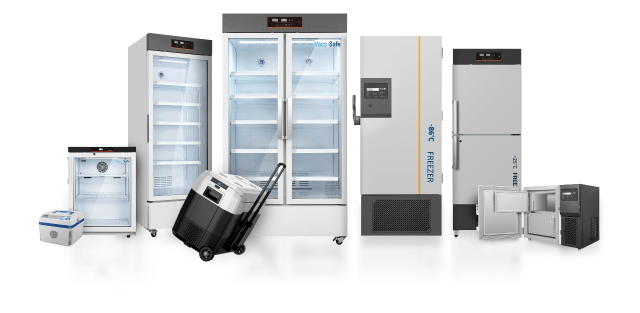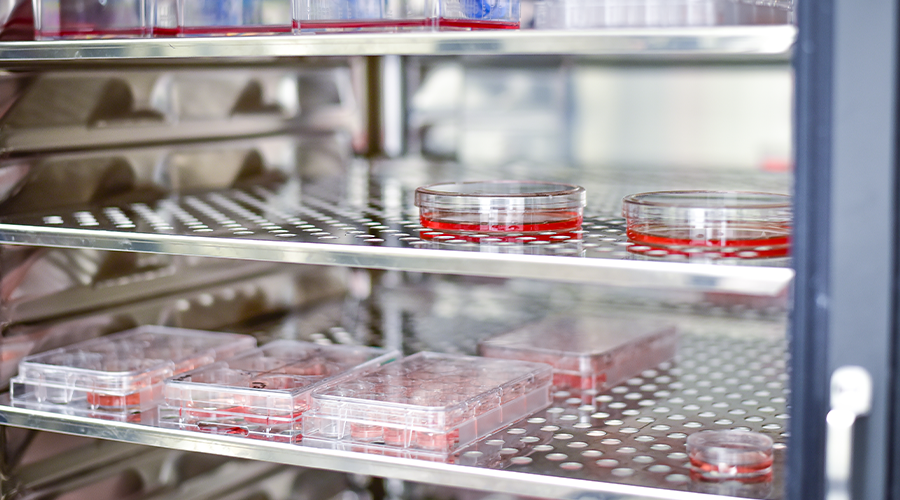
Complete Guide To Lab CO₂ Incubators
March 13, 2025
How To Set Up a Pharmacy
May 5, 2025Sample collection and storage are two important steps of any diagnostic procedure. Samples are collected and stored for laboratory testing and must adhere to strict guidelines for an efficient and safe lab. With so many different kinds of samples, storage and sampling techniques are based on the type, handling needs and applications. However there are some universal guidelines that apply to all sample collection and storage protocols in a laboratory and during transportation. In this article we will explain what samples are, and the right way to collect, transport and store them for a laboratory.
Sample collection and storage are two important steps of any diagnostic procedure. Samples are collected and stored for laboratory testing and must adhere to strict guidelines for an efficient and safe lab. With so many different kinds of samples, storage and sampling techniques are based on the type, handling needs and applications. However there are some universal guidelines that apply to all sample collection and storage protocols in a laboratory and during transportation. In this article we will explain what samples are, and the right way to collect, transport and store them for a laboratory.
What is a Biological Sample?
A sample is a specific quantity of things like blood, urine, or bodily tissue taken from a larger specimen to be examined and analysed in a laboratory. Samples are used for diagnostic, therapeutic or surgical purposes and can help with the development of new treatments and technologies.
Biological Sample Collection
There are a number of different samples that can be collected for laboratory testing. From the human body, often a blood sample is enough for testing, however sometimes other samples are needed like urine, faeces and saliva. Some samples are obtained when the body naturally excretes them. Others need to be surgically removed. When collecting samples there are strict procedures and rules that must be followed to ensure the sample remains viable.
Procedures for sample collection
Different types of samples require different collection methods. There are three different categories than samples fit into. There are those eliminated from the body, those easy to obtain and samples from within. Procedures for each sample collection are as follows:
- Samples eliminated from the body: Samples like urine, faeces, saliva, oral fluid, and sweat are collected by the body naturally eliminating them. Sometimes these samples can be collected at home by the patient who is given a sterile container or vial with specific instructions on handling. They can also be collected at a medical facility or laboratory patient service centre.
- Samples easy to obtain: Samples that are easy to obtain like secretions and fluids, open wounds and sores, hair, and fingernails are often collected at a medical facility by a professional. Samples like nasal secretions are often obtained via a swab which is then stored in a vial for laboratory testing.
- Samples from within: Samples like blood, tissue biopsy, and bone marrow are obtained by breaking through the skin and withdrawing the sample from within the body. Blood collection is usually done by a nurse or pathologist who collects the blood via a syringe and vial for storage. Tissue collection is a more invasive procedure that needs to be collected by a surgeon under local anaesthesia.
Rules for Sample Collection
Ensuring the integrity of samples is paramount for safe and efficient diagnostic testing in a laboratory. Correct sample collection impacts the accuracy of test results, influences the cost effectiveness of procedures, and optimises laboratory efficiency. When collecting samples it is imperative to follow these general rules.
- Wear PPE: Personal protective equipment is essential for protecting samples from contamination and avoiding the exposure to contaminants. When collecting samples, PPE might be gloves, eye protection, face shields, lab coats, aprons, boots, or hearing protection.
- Ensure the work zone is disinfected: If you are dealing with collecting samples, it is imperative you disinfect the work zone.
- Choose the right equipment: When collecting samples there is a variety of equipment that can be used. Sample collection equipment ranges from containers like test tubes, specimen jars, bags and bottles to swabs, sponge sticks, gauze wipes and spoons. Each type of sample requires different sampling tools and containers so it is imperative to choose the right equipment when collecting samples.
- Only use sterilised equipment: Either sterilise equipment prior to each use or purchase single use equipment for sample collection. It is imperative that equipment used for sample collection is sterile.
- Don’t touch samples: Do not let samples come into contact with your own skin. By touching samples we can transfer various bacteria, and oils from our skin to the sample and infect it. The lid and container of the sample must not be touched, nor should the sampling tools, except with protective gloves on.
- Work quickly to avoid contamination: It is imperative that samples are collected and stored in containers quickly to avoid any contamination. The quality of samples can be affected by the environment and lose their efficacy.
- Label samples correctly: Samples must be labelled immediately. Any errors in labelling can have disastrous consequences for patients or research projects. The information recorded on a sample should be extensive and uniform, and include type and source of sample, date and time of collection, place of collection, initials of the person who took the sample, and storage requirements.
Biological Sample Transportation
When transporting samples to a laboratory, there are specific guidelines that must be followed. The packaging and transportation of biological samples is regulated to ensure materials do not become contaminated or escape containment and contaminate the environment. To ensure the safe transportation of biological samples, regulations include packaging, storage conditions and timing guidelines.
Packaging Guidelines
Biological samples need to be packaged in three layers for transportation – a leak proof primary vessel, a secondary layer of packaging and a strong outer packaging.
- Primary packaging – Leak proof containers, specifically designed for the samples must be used to ensure it is leak proof and spill proof. Depending on the type of sample, this container could be a tube, vial or ampoule.
- Secondary packaging – The primary packaging is placed within a secondary container which should also be leak-proof to avoid any spillage. This layer is made of absorbent material like paper towel to absorb any potential leaks, which is then sealed in a plastic bag or vessel.
- Outer packaging – The outer packaging must be strong like a rigid cardboard, polystyrene box, plastic esky or hard insulated container that can withstand shock during transportation. It must be clearly labelled, depending on the nature of the sample. The label must state whether the sample is Category A (pure cultures and pathogens like pure hepatitis B that can cause life threatening diseases), Category B, (blood or urine tests, pregnancy tests or biopsies) or exempt specimens (fixed tissues on a glass slide or cell cultures). All biological samples for transportation must also have a biohazard label. Labels must be securely attached to the outer packaging and primary packaging.
Transportation Temperature and Timeframes
When transporting biological samples it is important to keep them at the correct temperature. Biological samples that require refrigeration should be transported at a temperature of 2°C to 8°C. Samples that require freezing should be transported at temperatures between -20°C and -80°C. Different rules apply to different samples.
- Blood samples: Transportation of blood samples should be between temperatures of 4°C and 25°C. These samples require refrigeration so ice packs or cold packs can be used during transportation. Studies are now showing that gel packs can also be used to keep temperature consistency during transportation.
- Serum samples: Transport serum samples at temperatures between 2°C and 8°C as long as they reach the laboratory within one week. Dry ice can be used for refrigeration if there is no refrigerated transport available. Any extended timeframe for transportation will require the sample to be stored at 20°C.
- Infectious samples: Infectious biological samples like respiratory specimens (sputum, nasal or throat swabs) should be stored at 2°C to 8°C for up to 72 hours once collected. Any delay in transporting or testing will require the specimens to be stored at -70°C or lower.
- Tissue samples: It is essential to fast freeze tissue specimens immediately and rapidly transport them to the laboratory once collected. Tissue samples can be flash frozen in liquid nitrogen and then transported at -80°C .
Transportation methods
Biological samples can be transported via road, rail, air, bike and foot depending on the distance and type of sample.
- Road and rail transport: Biological samples like those in categories a and b can be sent via road or rail, provided they have met specific criteria for packaging and temperature control.
- Air transport: Transporting biological samples via air requires adherence to strict International Air Transport Association (IATA) guidelines. These regulations involve specific packaging, labeling, temperature control, documentation and personnel training.
- Commercial transport: Biological samples can be transported using commercial couriers. Couriers are required to understand the guidelines when transporting biological samples. Prior to transportation, required licenses, permits and agreements must be obtained from the transportation company to ensure compliance with relevant regulations.
Biological Sample Storage
Once samples are collected and transported to the laboratory, it is imperative that they are stored in a safe and effective manner. Biological samples are often sensitive to temperature and light and need specific storage conditions like medical fridges and medical freezers. When these samples are maintained at an ambient temperature, they deteriorate over time. The correct storage temperature is determined by the type of biological sample and the length of time it will be stored. The different storage temperatures range from room temperature to cryogenic freezer storage and each suits different biological samples.
Medical fridges and freezers are built to adhere to strict regulations called cold chain guidelines. They are temperature controlled, and have features like alarms, data loggers and backup battery supply to ensure the cold storage protocols are met. If biological samples are not stored within strict temperature guidelines, they may be exposed to excessive heat or cold which will rapidly decrease their usability and make them redundant.
15°C to 27°C (Room Temperature)
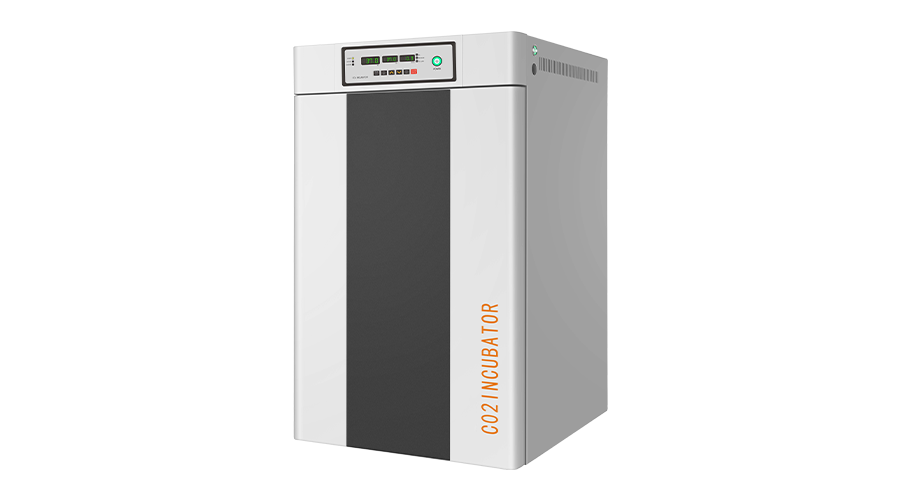
If tissues or biological samples are preserved in preservatives like alcohol or formalin, they can be maintained in a room temperature setting. To maintain this room temperature of 15°C to 27°C it is wise to use an incubator however, as ambient temperature can change. Refrigerated incubators have a heating and cooling system to ensure the environment is stable for non-critical materials.
If long term storage of biological samples like skin is required, the preferred alternative method is cryopreservation (freezing), which involves storing tissue at extremely low temperatures in liquid nitrogen at -150°C. If viability of the tissue is not required, other storage methods include deep freezing or freeze drying.
2 to 8 °C (Refrigerated)
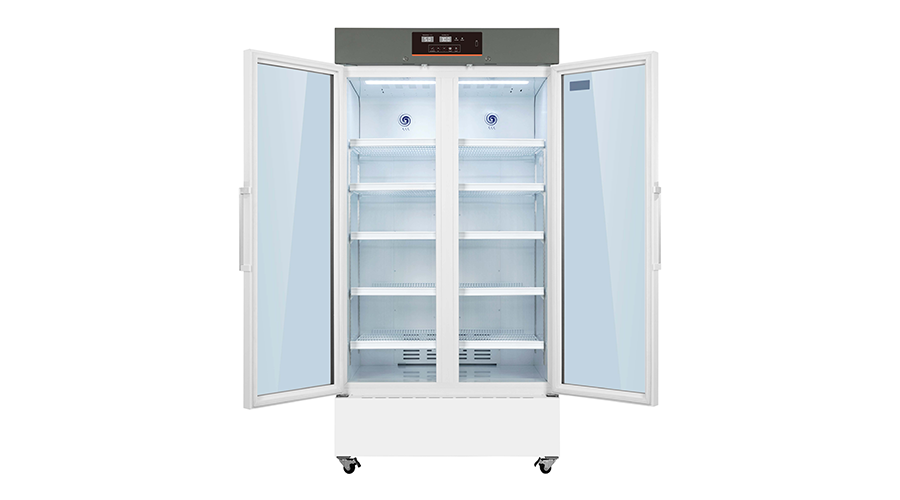
When a blood sample is taken it must be in the laboratory within 8 hours of collection. If it cannot be analysed within those 8 hours, it must be stored in a medical grade fridge with strict temperature control. Blood samples need to be stored between 2 and 8 °C to keep them viable and stop degradation but cannot be stored at these temperatures for more than 7 days. A sample that is not going to be analysed within 7 days must then be frozen at -15°C to -20°C.
-20ºC (Freezer Storage)
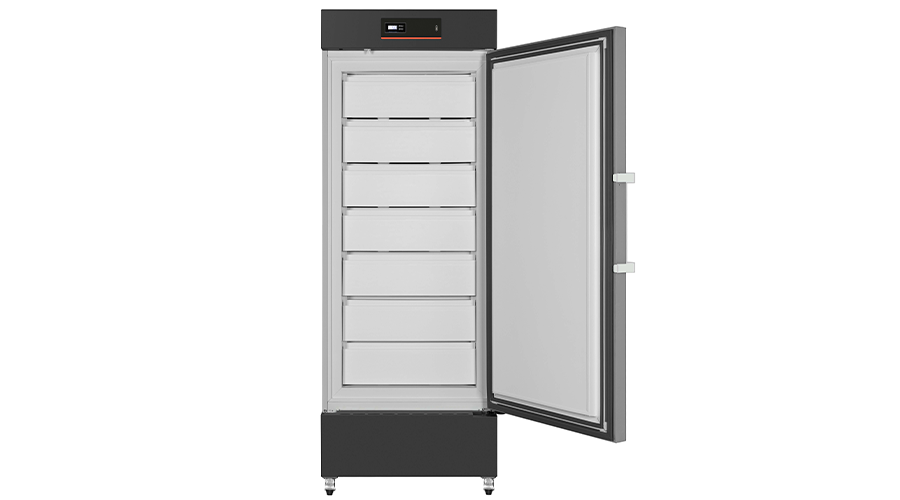
Biological samples like skin grafts, cell cultures, and DNA must be stored in a medical grade freezer in order to preserve their integrity for research and analysis. Skin grafts and cell cultures must be stored between a temperature range of -20°C and -40°C. Medical freezers provide this level of cold storage for the protection of temperature sensitive biological samples. When DNA is purified (isolated and separated from other cellular components) it should be stored at either –20°C or –70°C in freezing or ultra-low freezing conditions. It is essential to avoid repeat freezing and thawing as this will lead to degradation.
-80 (Ultra-Low Freezer Storage)
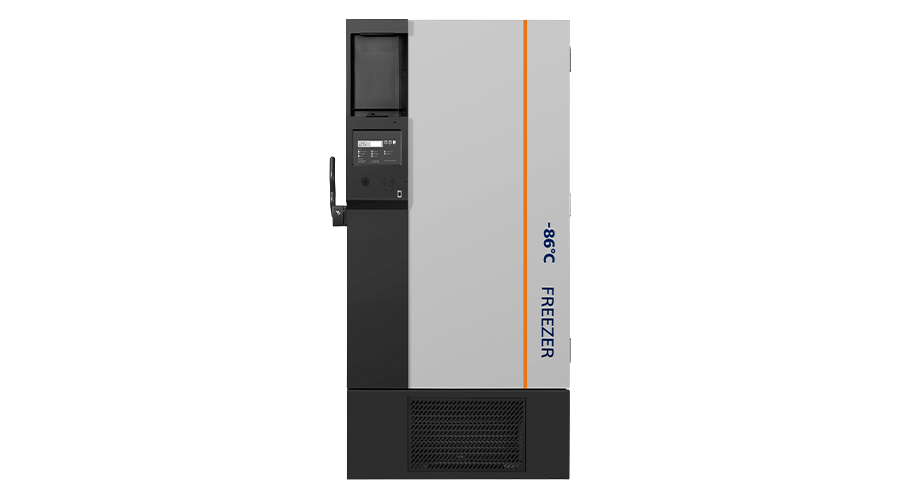
Ultra low temperature freezers are ideal for long term preservation of biological materials and samples like tissues, proteins, enzymes and other research materials. These freezers are essential in medical and research laboratories where biological samples need to be stored for long periods. This temperature of -80°C is essential for the stability of the samples and to avoid degradation prior to testing. Ultra low freezers allow five or more years of safe storage for bacterial and fungal cultures.
Collecting, transporting and storing samples for a laboratory requires strict guidelines and specific equipment like medical grade fridges and freezers. Our guide explains how to collect, transport and store samples for a laboratory to ensure they remain safe and effective for research or medical purposes. For further details on finding the right equipment for sample storage, contact the team at Vacc-Safe.
Sample collection and storage are two important steps of any diagnostic procedure. Samples are collected and stored for laboratory testing and must adhere to strict guidelines for an efficient and safe lab. With so many different kinds of samples, storage and sampling techniques are based on the type, handling needs and applications. However there are some universal guidelines that apply to all sample collection and storage protocols in a laboratory and during transportation. In this article we will explain what samples are, and the right way to collect, transport and store them for a laboratory.
What is a Biological Sample?
A sample is a specific quantity of things like blood, urine, or bodily tissue taken from a larger specimen to be examined and analysed in a laboratory. Samples are used for diagnostic, therapeutic or surgical purposes and can help with the development of new treatments and technologies.
Biological Sample Collection
There are a number of different samples that can be collected for laboratory testing. From the human body, often a blood sample is enough for testing, however sometimes other samples are needed like urine, faeces and saliva. Some samples are obtained when the body naturally excretes them. Others need to be surgically removed. When collecting samples there are strict procedures and rules that must be followed to ensure the sample remains viable.
Procedures for sample collection
Different types of samples require different collection methods. There are three different categories than samples fit into. There are those eliminated from the body, those easy to obtain and samples from within. Procedures for each sample collection are as follows:
- Samples eliminated from the body: Samples like urine, faeces, saliva, oral fluid, and sweat are collected by the body naturally eliminating them. Sometimes these samples can be collected at home by the patient who is given a sterile container or vial with specific instructions on handling. They can also be collected at a medical facility or laboratory patient service centre.
- Samples easy to obtain: Samples that are easy to obtain like secretions and fluids, open wounds and sores, hair, and fingernails are often collected at a medical facility by a professional. Samples like nasal secretions are often obtained via a swab which is then stored in a vial for laboratory testing.
- Samples from within: Samples like blood, tissue biopsy, and bone marrow are obtained by breaking through the skin and withdrawing the sample from within the body. Blood collection is usually done by a nurse or pathologist who collects the blood via a syringe and vial for storage. Tissue collection is a more invasive procedure that needs to be collected by a surgeon under local anaesthesia.
Rules for Sample Collection
Ensuring the integrity of samples is paramount for safe and efficient diagnostic testing in a laboratory. Correct sample collection impacts the accuracy of test results, influences the cost effectiveness of procedures, and optimises laboratory efficiency. When collecting samples it is imperative to follow these general rules.
- Wear PPE: Personal protective equipment is essential for protecting samples from contamination and avoiding the exposure to contaminants. When collecting samples, PPE might be gloves, eye protection, face shields, lab coats, aprons, boots, or hearing protection.
- Ensure the work zone is disinfected: If you are dealing with collecting samples, it is imperative you disinfect the work zone.
- Choose the right equipment: When collecting samples there is a variety of equipment that can be used. Sample collection equipment ranges from containers like test tubes, specimen jars, bags and bottles to swabs, sponge sticks, gauze wipes and spoons. Each type of sample requires different sampling tools and containers so it is imperative to choose the right equipment when collecting samples.
- Only use sterilised equipment: Either sterilise equipment prior to each use or purchase single use equipment for sample collection. It is imperative that equipment used for sample collection is sterile.
- Don’t touch samples: Do not let samples come into contact with your own skin. By touching samples we can transfer various bacteria, and oils from our skin to the sample and infect it. The lid and container of the sample must not be touched, nor should the sampling tools, except with protective gloves on.
- Work quickly to avoid contamination: It is imperative that samples are collected and stored in containers quickly to avoid any contamination. The quality of samples can be affected by the environment and lose their efficacy.
- Label samples correctly: Samples must be labelled immediately. Any errors in labelling can have disastrous consequences for patients or research projects. The information recorded on a sample should be extensive and uniform, and include type and source of sample, date and time of collection, place of collection, initials of the person who took the sample, and storage requirements.
Biological Sample Transportation
When transporting samples to a laboratory, there are specific guidelines that must be followed. The packaging and transportation of biological samples is regulated to ensure materials do not become contaminated or escape containment and contaminate the environment. To ensure the safe transportation of biological samples, regulations include packaging, storage conditions and timing guidelines.
Packaging Guidelines
Biological samples need to be packaged in three layers for transportation – a leak proof primary vessel, a secondary layer of packaging and a strong outer packaging.
- Primary packaging – Leak proof containers, specifically designed for the samples must be used to ensure it is leak proof and spill proof. Depending on the type of sample, this container could be a tube, vial or ampoule.
- Secondary packaging – The primary packaging is placed within a secondary container which should also be leak-proof to avoid any spillage. This layer is made of absorbent material like paper towel to absorb any potential leaks, which is then sealed in a plastic bag or vessel.
- Outer packaging – The outer packaging must be strong like a rigid cardboard, polystyrene box, plastic esky or hard insulated container that can withstand shock during transportation. It must be clearly labelled, depending on the nature of the sample. The label must state whether the sample is Category A (pure cultures and pathogens like pure hepatitis B that can cause life threatening diseases), Category B, (blood or urine tests, pregnancy tests or biopsies) or exempt specimens (fixed tissues on a glass slide or cell cultures). All biological samples for transportation must also have a biohazard label. Labels must be securely attached to the outer packaging and primary packaging.
Transportation Temperature and Timeframes
When transporting biological samples it is important to keep them at the correct temperature. Biological samples that require refrigeration should be transported at a temperature of 2°C to 8°C. Samples that require freezing should be transported at temperatures between -20°C and -80°C. Different rules apply to different samples.
- Blood samples: Transportation of blood samples should be between temperatures of 4°C and 25°C. These samples require refrigeration so ice packs or cold packs can be used during transportation. Studies are now showing that gel packs can also be used to keep temperature consistency during transportation.
- Serum samples: Transport serum samples at temperatures between 2°C and 8°C as long as they reach the laboratory within one week. Dry ice can be used for refrigeration if there is no refrigerated transport available. Any extended timeframe for transportation will require the sample to be stored at 20°C.
- Infectious samples: Infectious biological samples like respiratory specimens (sputum, nasal or throat swabs) should be stored at 2°C to 8°C for up to 72 hours once collected. Any delay in transporting or testing will require the specimens to be stored at -70°C or lower.
- Tissue samples: It is essential to fast freeze tissue specimens immediately and rapidly transport them to the laboratory once collected. Tissue samples can be flash frozen in liquid nitrogen and then transported at -80°C .
Transportation methods
Biological samples can be transported via road, rail, air, bike and foot depending on the distance and type of sample.
- Road and rail transport: Biological samples like those in categories a and b can be sent via road or rail, provided they have met specific criteria for packaging and temperature control.
- Air transport: Transporting biological samples via air requires adherence to strict International Air Transport Association (IATA) guidelines. These regulations involve specific packaging, labeling, temperature control, documentation and personnel training.
- Commercial transport: Biological samples can be transported using commercial couriers. Couriers are required to understand the guidelines when transporting biological samples. Prior to transportation, required licenses, permits and agreements must be obtained from the transportation company to ensure compliance with relevant regulations.
Biological Sample Storage
Once samples are collected and transported to the laboratory, it is imperative that they are stored in a safe and effective manner. Biological samples are often sensitive to temperature and light and need specific storage conditions like medical fridges and medical freezers. When these samples are maintained at an ambient temperature, they deteriorate over time. The correct storage temperature is determined by the type of biological sample and the length of time it will be stored. The different storage temperatures range from room temperature to cryogenic freezer storage and each suits different biological samples.
Medical fridges and freezers are built to adhere to strict regulations called cold chain guidelines. They are temperature controlled, and have features like alarms, data loggers and backup battery supply to ensure the cold storage protocols are met. If biological samples are not stored within strict temperature guidelines, they may be exposed to excessive heat or cold which will rapidly decrease their usability and make them redundant.
15°C to 27°C (Room Temperature)

If tissues or biological samples are preserved in preservatives like alcohol or formalin, they can be maintained in a room temperature setting. To maintain this room temperature of 15°C to 27°C it is wise to use an incubator however, as ambient temperature can change. Refrigerated incubators have a heating and cooling system to ensure the environment is stable for non-critical materials.
If long term storage of biological samples like skin is required, the preferred alternative method is cryopreservation (freezing), which involves storing tissue at extremely low temperatures in liquid nitrogen at -150°C. If viability of the tissue is not required, other storage methods include deep freezing or freeze drying.
2 to 8 °C (Refrigerated)

When a blood sample is taken it must be in the laboratory within 8 hours of collection. If it cannot be analysed within those 8 hours, it must be stored in a medical grade fridge with strict temperature control. Blood samples need to be stored between 2 and 8 °C to keep them viable and stop degradation but cannot be stored at these temperatures for more than 7 days. A sample that is not going to be analysed within 7 days must then be frozen at -15°C to -20°C.
-20ºC (Freezer Storage)

Biological samples like skin grafts, cell cultures, and DNA must be stored in a medical grade freezer in order to preserve their integrity for research and analysis. Skin grafts and cell cultures must be stored between a temperature range of -20°C and -40°C. Medical freezers provide this level of cold storage for the protection of temperature sensitive biological samples. When DNA is purified (isolated and separated from other cellular components) it should be stored at either –20°C or –70°C in freezing or ultra-low freezing conditions. It is essential to avoid repeat freezing and thawing as this will lead to degradation.
-80 (Ultra-Low Freezer Storage)

Ultra low temperature freezers are ideal for long term preservation of biological materials and samples like tissues, proteins, enzymes and other research materials. These freezers are essential in medical and research laboratories where biological samples need to be stored for long periods. This temperature of -80°C is essential for the stability of the samples and to avoid degradation prior to testing. Ultra low freezers allow five or more years of safe storage for bacterial and fungal cultures.
Collecting, transporting and storing samples for a laboratory requires strict guidelines and specific equipment like medical grade fridges and freezers. Our guide explains how to collect, transport and store samples for a laboratory to ensure they remain safe and effective for research or medical purposes. For further details on finding the right equipment for sample storage, contact the team at Vacc-Safe.
